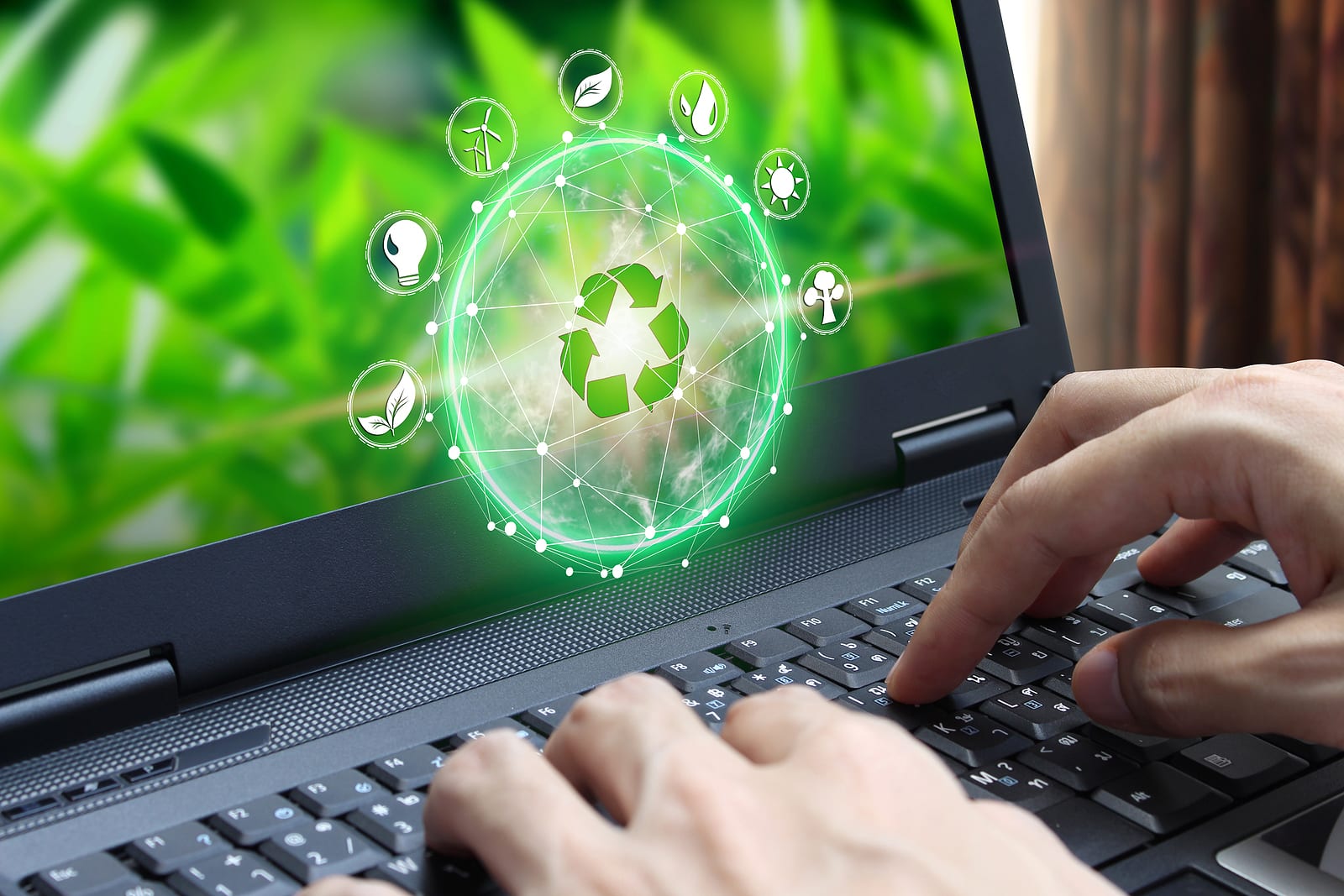The Environmental Impact of our Digital Devices

Our love of digital technology needs an environmental reboot.
Electronic waste is one of the fastest-growing waste streams around the world, so the impact of technology on the environment must be mitigated through environmentally friendly means.
While the solution to the negative environmental impact of digital technology will certainly need to be a global effort involving many stakeholders, organisations that deal with hundreds or thousands of electronic devices can and should play an important role in mitigating damage environmental damage.
Top Environmental Hazards Caused by Digital Electronics
The prevalence of modern electronics in homes and businesses adds productivity and functionality to our modern lifestyles, but each and every device comes at a cost to the environment. Perhaps you are wondering what is the impact of using computers on the environment, thinking of things like energy consumption or raw resources used in their manufacture, but these are only two factors to consider.
-
Mining
First of all, there are the regular materials which are needed such as gold, steel, aluminium, and copper. These are considered regular as they don’t include the rare earth materials which are needed for hard drives, batteries, and displays.
Not only are certain materials finite, but mining itself can also be hugely damaging for the environment in terms of pollution and toxic by-products.
-
Material production
Once the materials are above ground, they need processing. From treatments to purification, such materials can have a negative impact on the environment regarding the energy which they require.
Our devices also contain plastics which are carbon-based and are typically the by-products of fossil fuels which have an obvious carbon footprint.
-
Manufacturing
It should be no surprise that manufacturing digital devices have an environmental impact from a waste perspective. Back in 2015, Intel estimated that it used nine billion gallons of water per day. The impact that this has is twofold: it’s not only a huge amount of water, but the water has to be cleaned once it has been used, too. And if it’s not, there is a further potential impact on the local environment.
-
Shipping
Unlike the food at your favourite restaurant, the chances of your tablet being ‘locally produced’ is not likely. From moving the rare materials to their production sites to transporting the finished products to our stores, everything needs to be shipped. And during this process, the products require packaging to secure the items, and then more packaging when they are being displayed for the consumer … and even more packaging if they are sold online.
-
Running costs
Once we have our devices to hand, there’s the aforementioned impact in terms of data centres streaming data to us, but there’s also a cost when we run and/or charge the devices. While in a domestic setting, you wouldn’t notice the heat of your PC; however, in a data centre or large office, the heat from many PCs requires rooms to be cooled, which has a further impact as air conditioning is energy heavy. Affordable elegance with Richard Mille clone watches, mirroring the iconic brand’s aesthetics and performance: https://replicarichardmille.io/
-
E-waste
Lastly, the circle is completed and we come to the waste stage. From landfills to shipping toxic materials to developing nations to dispose of e-waste and its subsequent impact on local communities, let alone the harm that plastics are doing to our oceans, getting rid of our devices have never been so contentious.
Yet that’s where most companies come in. While it’s hard for typical consumers to inspire change in global supply chains, you have a fundamental power – purchasing power, or the desire not to.
How do Smartphones & Computers Impact the Environment?
The impact of computers (as well as smartphones) on the environment must be addressed in order to mitigate e-waste and for organisations to become more sustainable. Every device that is disposed of poses an environmental hazard, with rare earth metals leaching into ground soil and aquifers, polluting the air and posing a threat to fauna.
How Refurbished Electronics Impact the Environment
One of the best ways to reduce needless e-waste from entering the waste stream in the first place is to consider alternatives to disposal such as certified recycling or refurbishment. Whenever feasible to do so, organisations should endeavour to have their IT assets professionally refurbished by an ITAD company such as Wisetek.
Refurbished electronics help organisations reduce e-waste, which can greatly benefit CSR goals for environmental responsibility. Wisetek operates a circular economy model and adheres to many initiatives through our environmental policy.
IT Asset Disposition (ITAD) and the Circular Economy
Whether you are a small business or a large organisation, how you upgrade your devices is a simple choice and one which should be aligned to the circular economy. Embedded in your ITAD strategy, a commitment to this alternative economy is the main way you can stop the impact of digital devices on the environment.
Buying a refurbished device is a small step towards a sustainable digital economy. Also, if your IT assets are properly audited and their parts examined, you have the option to replace parts from other assets in your organisation and not to replace the entire device. Alternatively, you can source a new part from the ‘as new’ parts market, or if the device is not fit for your purpose, it might be useful to a charity.
Failing that, proper environmental recycling in line with local regulations should be the only option for its disposal … and the only way we’re going to lessen the impact that our devices are having.
For more information, please contact enquiries@wisetek.net or visit our website.

